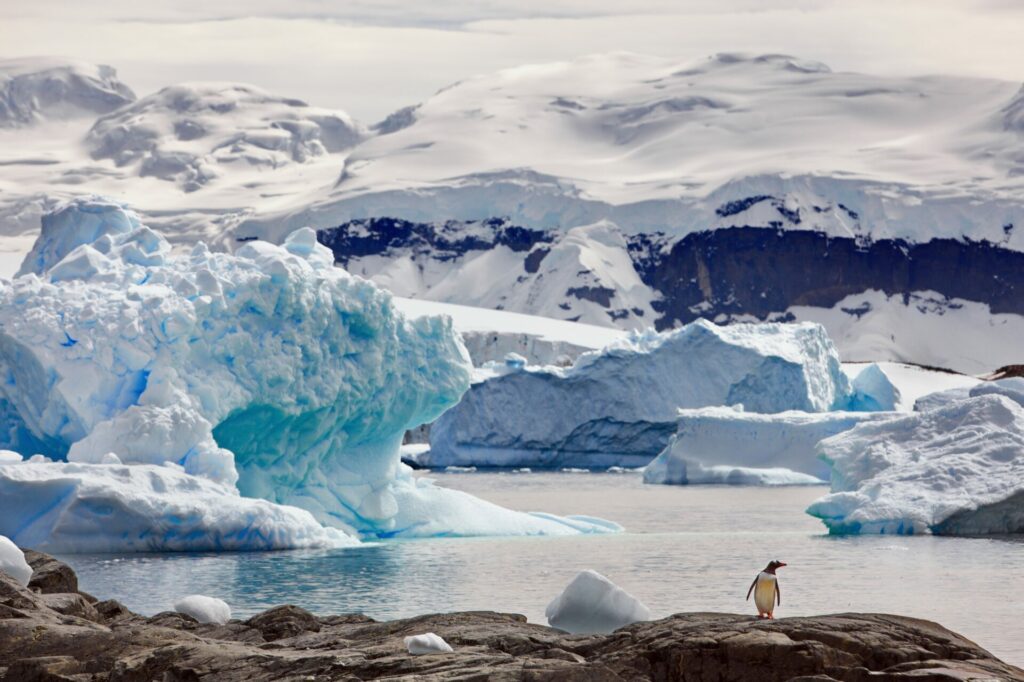Four out of five emperor penguin colonies in Antarctica experienced total breeding failure last year after sea ice that chicks need to survive broke earlier than usual.
Researchers with the British Antarctic Survey used satellite images to track the melting ice in the Bellingshausen Sea and the presence of emperor penguins on the frozen mass.
‘It’s a grim story,’ lead study author Dr Peter Fretwell said. ‘I was shocked. It’s very hard to think of these cute fluffy chicks dying in large numbers.’
Their findings were published in the journal Communications Earth & Environment stating: ‘Emperor penguins are an iconic symbol of Antarctica threatened by climate change’.
The iconic species needs stable ice each year between April and January for reproductive success.
Emperor penguins lay eggs in May or June, and the chicks hatch after 65 days. But it takes the young birds until December or January to develop waterproof feathers, meaning they must stay on solid ice before that takes place.
When the ice breaks up too early, the chicks can fall into the ocean and drown or freeze, according to the research team.
‘There is hope: We can cut our carbon emissions that are causing the warming. But if we don’t we will drive these iconic, beautiful birds to the verge of extinction.’
The study notes that localised sea ice loss has caused chick deaths in the past, but such widespread ‘catastrophic breeding failure’ is unprecedented.
‘Of the five breeding sites in the region all but one experienced total breeding failure after sea ice break-up before the start of the fledging period of the 2022 breeding season. This is the first recorded incident of a widespread breeding failure of emperor penguins that is clearly linked with large-scale contractions in sea ice extent,’ the paper explained.

Climate change is the cause of what scientists have called a death sentence for the species, as the study also highlighted that sea ice loss could drive 90 per cent of emperor penguin colonies to extinction by the end of the century. This devastating decline will occur if current levels of global warming continue.
‘We have never seen emperor penguins fail to breed, at this scale, in a single season,’ Fretwell said. ‘There is hope: We can cut our carbon emissions that are causing the warming. But if we don’t we will drive these iconic, beautiful birds to the verge of extinction.’
Antarctica is the emperor penguin’s only habitat. Only 300,000 breeding pairs of the world’s largest penguin remain. Of the 62 known colonies, Fretwell told the Associated Press that low sea ice levels last year harmed around 30 percent of those, and 13 ‘likely failed entirely.’

The researchers noted that emperor penguins will relocate short distances to new colonies when sea ice loss affects breeding. However, this might not be possible in the future if breeding grounds become uninhabitable on a larger, regional scale.
In February, sea ice levels in Antarctica reached their lowest extent in 45 years of record keeping.
Cassandra Brooks, an Antarctic researcher and assistant professor at the University of Colorado Boulder said: ‘There is mounting evidence that emperor penguins may actually go extinct directly due to loss of sea ice resulting from our planet’s warming. Our window in which to ensure their survival is narrowing.’










